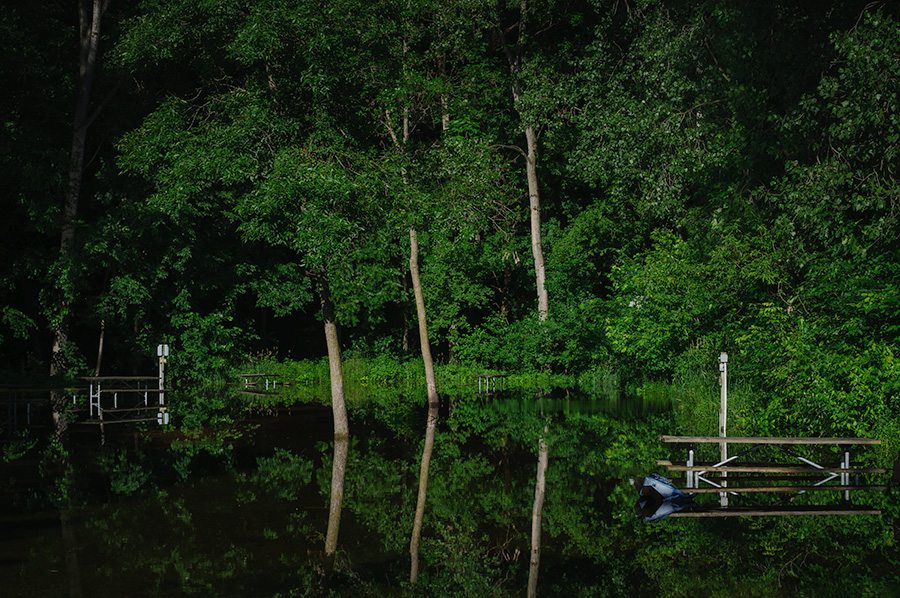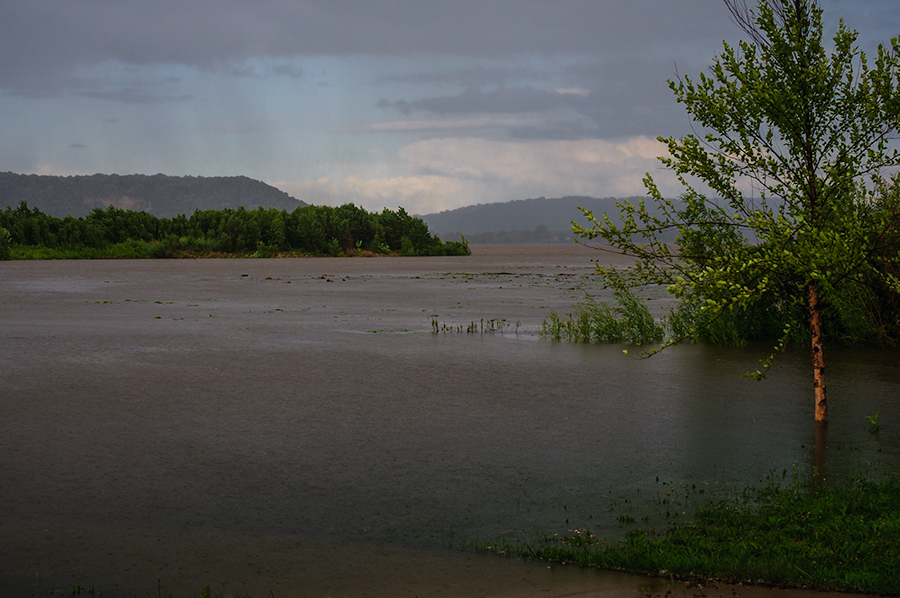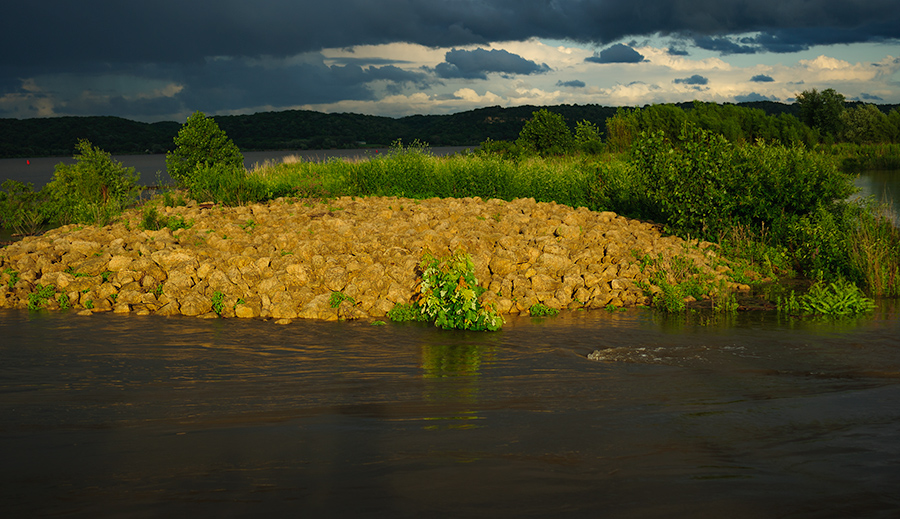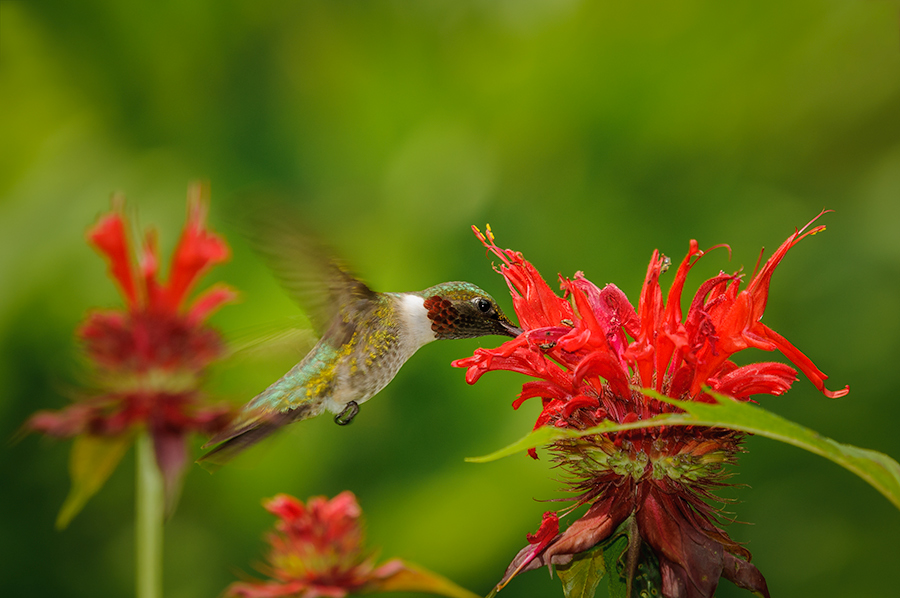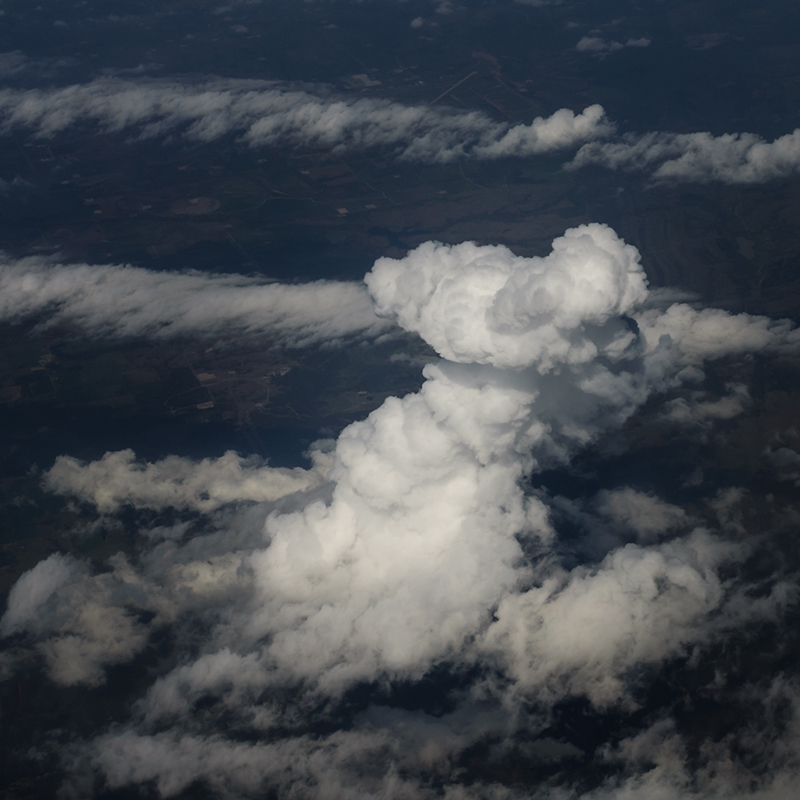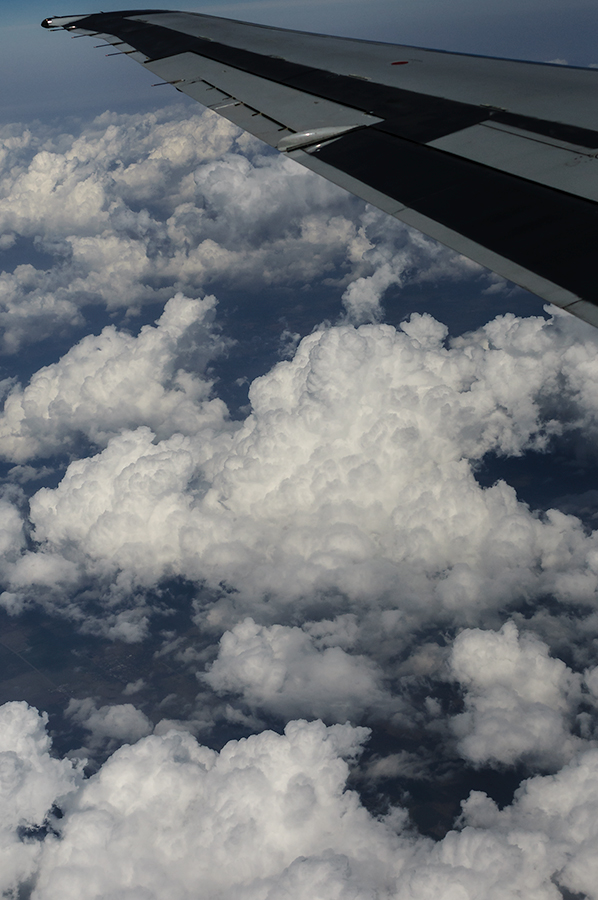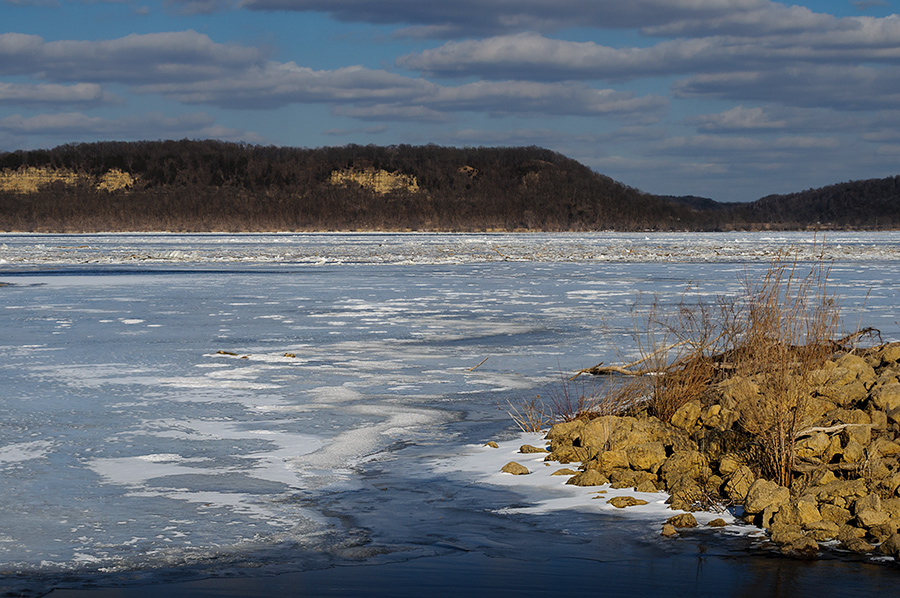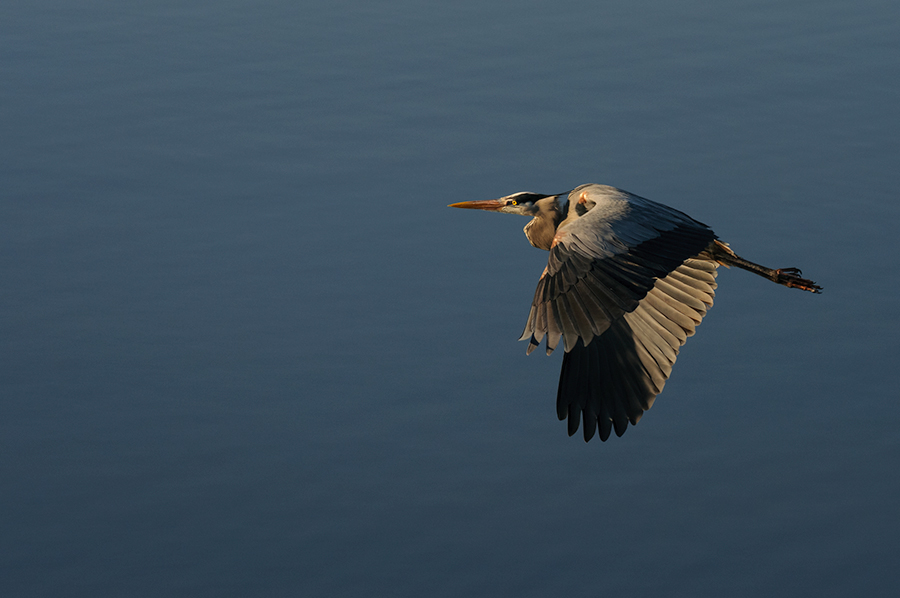
Joan, Cooper, and I went out for another paddle adventure last weekend. This time we explored the Upper Iowa River, northwest of Decorah, Iowa. This is a very popular river among paddlers and people that just want to drift downstream in an inner tube. We used a shuttle service on both days that brought us and our kayaks to an access point of our choice upstreams and then we paddled several hours back to our campsite in Bluffton, Iowa.

I didn’t take the camera with me on Saturday because we had never paddled a river with partly fast flowing water and ripples before. After the first tour I felt more comfortable and really wanted to make some images of this gorgeous river valley and the rocks and bluffs. Sunday was also a lot more quiet and we saw more wildlife than the day before.

Creating the photos was a little like making lemonade out of vinegar. The wonderful sunny weather created of course some very harsh light, but this was the only challenge that I had to face beside keeping the gear dry.

My subject is the landscape and I used the canoes and kayaks on the water mainly to create some scale for the image. Since we paddled part of the river the day before I had already some ideas where to stop. By using the reflections of the bluffs and rocks on the water as part of the composition I tried to give the scene in these photos a romantic touch.

We have paddled only a few sections of the Upper Iowa River yet, but there is a lot more to explore and we really want to go back there. And the dog? Well, Cooper “The Kayak-Hund” decided to jump out of the boat into the water a couple times, always at moments when he was not supposed to do it… But this is the fun you have when a dog is on board… ;-)



